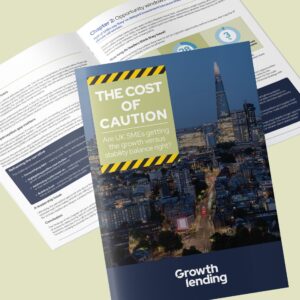Why is the “funding gap” such a problem?
Making sense of the struggles by UK SMEs to access appropriate finance
Funding that is appropriately matched to the needs of a business can be transformative for its growth trajectory, yet we know that for so many UK SMEs, securing funding remains a persistent challenge and barrier to growth.
Despite a greater availability of funding options than ever before and funders insisting that they have plenty of liquidity, business leaders, advisors and lending professionals frequently cite the “funding gap” as a significant barrier to growth. But what exactly is the funding gap, and why does it pose such a problem?
In this article we explore the reality behind the funding gap, the factors contributing to it and the implications for SMEs, lenders, and the broader UK economy.
What is the funding gap?
The funding gap refers to the disconnect between businesses seeking finance and the ability to secure the right finance in an efficient manner.
Since the pandemic, we have seen an acceleration in the retrenchment of the high street banks from the SME lending market. This is particularly stark for businesses with a turnover of less than £15m that have seen a move to central management by the banks and the loss of local managers. This segment of the SME market is the lifeblood of the UK economy and needs the most support. The result has been the creation of a glut of growing businesses that fall outside the strict and often automated lending decision process of their banks and find the fragmented and dynamic alternative funding ecosystem daunting to engage with.
The alternative lending market has changed beyond all recognition over the past 10 years. There is now more choice than ever and last year the alternative funders provided more than 55% of new lending. Whilst the rise of the alternative lending provision is great news, the evolution of the knowledge base which makes for an effective market place has been slower to evolve.
How much of the funding gap is perception versus reality?
It’s both a real and perceived issue.
While there are more funding options available today than ever before, many business leaders remain unaware of the alternatives beyond traditional bank loans and equity financing. Confusion around eligibility, lender criteria and the rapidly evolving funding landscape means that many SMEs either assume they won’t qualify for funding or will have to give away equity. After that, they just don’t know where to start looking.
This knowledge gap often prevents businesses from securing the finance they need, reinforcing the perception that funding is inaccessible. The funding gap is therefore a gap in knowledge, as much as it is a gap in the availability of finance for businesses.
The role of geography in the funding gap
Venture capital and private equity firms are heavily concentrated in London and Manchester, creating a more developed funding ecosystem in these areas. In contrast, SMEs based in smaller cities or rural areas often lack access to local advisors with deep knowledge of the funding landscape and the options available beyond the high street banks. This means geography significantly influences access to funding.
While initiatives such as the British Business Bank’s regional funds aim to address this imbalance, disparities remain, particularly for businesses in regions with fewer financial service providers, or fewer advisors that have been exposed to the true breadth of the lending market.
Why is the funding gap such a problem?
The funding gap has widespread consequences.
For SMEs:
Many businesses limit their growth ambitions due to a lack of funding, assuming that it is going to be too difficult, too expensive or require them to dilute their equity. So they delay or avoid their growth plans, limiting expansion, hiring and investments in innovation.
But a lack of SME growth directly impacts employment rates and economic output – SMEs make up more than 99% of the UK business population, so less job creation and fewer technological advancements from this group has a catastrophic effect on UK growth as a whole.
For lenders:
The complexity of the market makes it harder for businesses to connect with the right lender, leading to missed opportunities and stunted investment plans. Even experienced advisors and intermediaries find the funding landscape confusing, with availability and the associated eligibility criteria changing all the time.
It is becoming increasingly apparent that a key role of trusted advisors to the SME market is to have a good understanding of the funding market and to actively support connectivity across the funding ecosystem. All too often we see inappropriate and sub-optimal funding structures being put in place purely as a result of a lack of awareness of the breadth of options available. In many regions we have seen this improve markedly over the past couple of years. Energetic organisations and forums are springing up where the desire to collaborate trumps that of competitive self-interest.
Key takeaways:
- More funding options exist than most SMEs realise
Engaging with the right advisors can open doors to solutions that may not be immediately obvious. Work with advisors that have experience in your sector and have a track record of securing finance across multiple lenders for businesses with a similar growth profile to yours. - Preparation is key
Strong financial planning and a clear business strategy improves a business’s attractiveness to lenders, opening up more options and the flexibility of choice - Regional differences matter
Understanding the local funding ecosystem can help businesses navigate the opportunities available to them – and give them the confidence to look further afield if they are not getting the support they need
The funding gap is a multifaceted issue that affects SMEs across the UK. While part of the problem stems from a genuine reduced risk appetite among traditional lenders, much of it is also due to perception and a lack of understanding about what is truly available. By improving financial preparedness, seeking expert advice and striving for a better understanding of the funding landscape, SME and lenders can work together to bridge this gap and unlock their growth potential.
- Interested in learning more about products that bridge the funding gap? Speak with one of our lending experts




